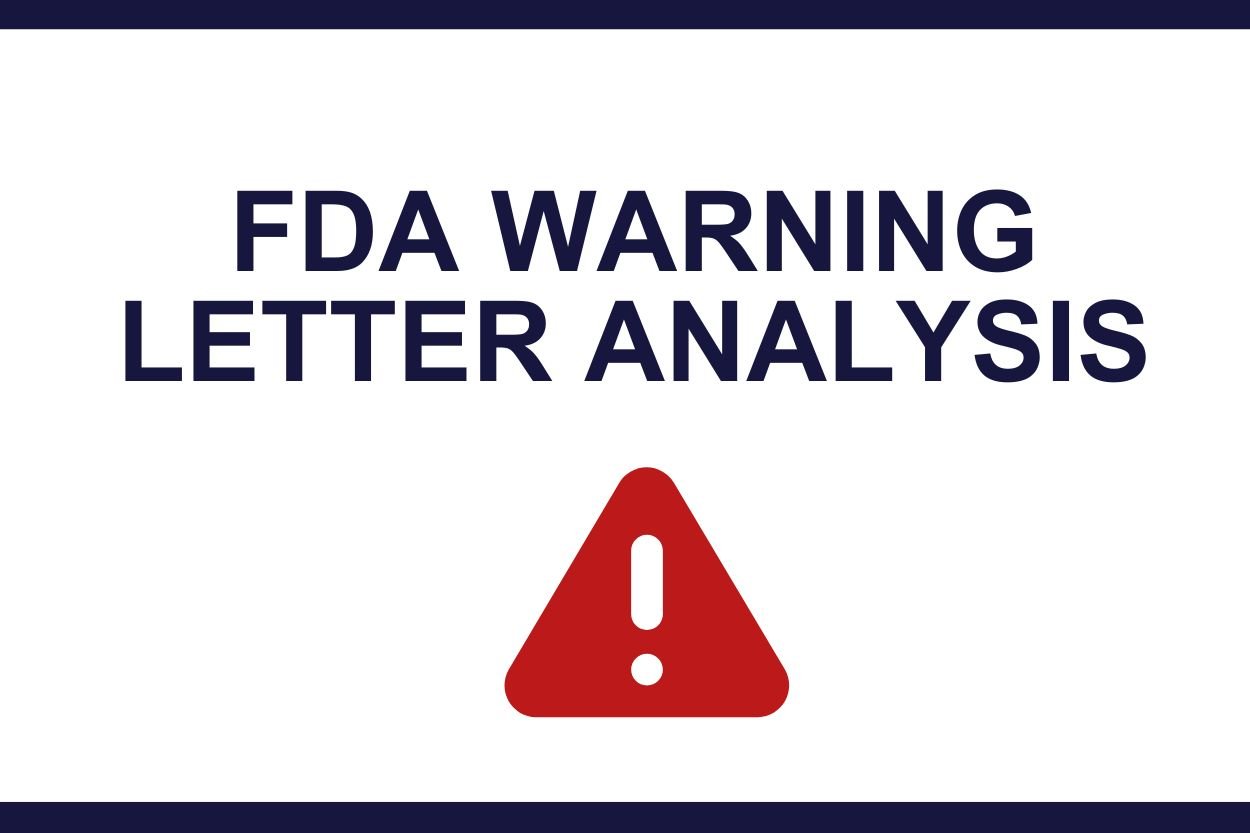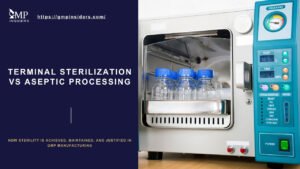The U.S. Food and Drug Administration (FDA) has issued a warning letter to Aspen SA Sterile Operations (Pty) Ltd., a subsidiary of Aspen Pharmacare Holdings Limited, following an inspection of its facility in Gqeberha, South Africa, from September 9 to 17, 2024.
The letter outlines significant violations of CGMP regulations, including failures in laboratory controls, aseptic processing, data integrity, and environmental monitoring. These deficiencies have resulted in the company’s drug products being classified as adulterated under section 501(a)(2)(B) of the Federal Food, Drug, and Cosmetic Act (FD&C Act).
Key Non-Conformances Identified
Non-Conformance 1: Failure to Establish Adequate Laboratory Controls
Regulatory Citation: 21 CFR 211.160(b)
Findings:
- The company failed to establish appropriate impurity specifications and did not conduct impurity testing before releasing sterile over-the-counter (OTC) drug products.
- Stability testing was inadequate for drug products containing Naphazoline Hydrochloride and Tetrahydrozoline Hydrochloride.
- The firm relied on customer-determined impurity limits without scientific justification, posing potential risks to patient safety.
RELATED ARTICLE: Defining Specification Limits in New Drug Products
Non-Conformance 2: Poor Aseptic Practices and Inadequate Cleanroom Design
Regulatory Citation: 21 CFR 211.113(b)
Findings:
- Operators blocked first air in ISO 5 classified areas, increasing contamination risks.
- Improper aseptic behaviors, including handling sterilized bottles with gloved hands instead of using sterile tools.
- Open-door interventions during aseptic processing allow potential contamination from lower-grade air.
- Smoke studies failed to demonstrate unidirectional airflow, indicating flaws in cleanroom design.
Non-Conformance 3: Inadequate Data Integrity Controls
Regulatory Citation: 21 CFR 211.68(b)
Findings:
- Operators selectively reported only passing results for filter integrity tests, omitting multiple failed results.
- Lack of oversight in reviewing electronic raw data and audit trails before batch release.
- Investigations into data integrity lapses were incomplete, and corrective actions were inadequate.
Non-Conformance 4: Inadequate Environmental Monitoring
Regulatory Citation: 21 CFR 211.42(c)(10)(iv)
Findings:
- Viable monitoring of air and surfaces in ISO 5 areas was not conducted where an operator was present removing fallen bottles.
- Non-viable particle monitoring (NVPM) probes were not placed in representative locations near exposed drug products.
- Operators routinely moved NVPM devices to locations different from those specified in procedures, potentially invalidating monitoring results.
SEE ALSO: Best Practices for Environmental Monitoring in Pharma Industry
CAPA Plan Recommendations
Non-Conformance 1: Failure to Establish Adequate Laboratory Controls
Regulatory Citation: 21 CFR 211.160(b)
Root Cause Analysis (RCA)
- Lack of a science-based approach to impurity specifications, leading to reliance on customer-defined limits instead of regulatory standards.
- Inadequate training of laboratory staff on impurity testing, stability testing, and method validation.
- No comprehensive risk assessment was conducted to evaluate impurity accumulation over time.
Corrective and Preventive Actions (CAPA)
- Establish scientifically justified impurity specifications for all drug products, including acceptable impurity levels.
- Conduct extensive impurity profiling during stability studies to track impurity trends over time.
- Implement third-party laboratory verification of impurity levels for cross-validation.
- Train laboratory personnel on updated impurity testing protocols and CGMP compliance.
Non-Conformance 2: Poor Aseptic Practices and Inadequate Cleanroom Design
Regulatory Citation: 21 CFR 211.113(b)
Root Cause Analysis (RCA)
- Deficiencies in personnel training leading to improper aseptic behavior.
- Insufficient procedural oversight, allowing deviations in cleanroom protocol.
- Lack of proper engineering controls, such as airflow barriers, to prevent contamination.
Corrective and Preventive Actions (CAPA)
- Conduct mandatory aseptic technique training for all operators and assess competency through periodic validation.
- Redesign cleanroom workflow to minimize human interventions in ISO 5 areas.
- Upgrade cleanroom monitoring systems to detect and record deviations in aseptic conditions.
- Strengthen supervisory oversight during aseptic processing with regular internal audits.
SEE ALSO: Cleanroom Classifications in GMP
Non-Conformance 3: Inadequate Data Integrity Controls
Regulatory Citation: 21 CFR 211.68(b)
Root Cause Analysis (RCA)
- Lack of automated audit trails, allowing selective reporting of results.
- Failure to implement strong data security controls, enabling unauthorized changes to data.
- Limited QU oversight on batch release processes.
Corrective and Preventive Actions (CAPA)
- Implement automated real-time data monitoring to prevent unauthorized changes.
- Conduct comprehensive audit trail reviews before every batch release.
- Train all personnel on data integrity principles and regulatory compliance.
- Establish an independent data review team responsible for ensuring data accuracy.
RELATED: Data Integrity and Data Governance in GMP
Non-Conformance 4: Inadequate Environmental Monitoring
Regulatory Citation: 21 CFR 211.42(c)(10)(iv)
Root Cause Analysis (RCA)
- Improper placement of environmental monitoring probes, leading to incomplete contamination detection.
- Failure to adhere to SOPs for environmental monitoring leads to inconsistency in data collection.
- Lack of real-time alerts for environmental deviations.
Corrective and Preventive Actions (CAPA)
- Perform an independent assessment of environmental monitoring procedures.
- Relocate non-viable particle monitors (NVPM) to ensure accurate detection of airborne contaminants.
- Implement a real-time alert system for environmental deviations.
- Increase quality oversight by conducting more frequent environmental monitoring audits.
Timeline for Implementation
Immediate Actions (0-3 Months)
- Conduct an independent assessment of laboratory controls, aseptic practices, and data integrity.
- Train personnel on new impurity testing procedures and aseptic techniques.
- Initiate real-time monitoring of environmental conditions.
Short-Term Actions (3-6 Months)
- Revise impurity specifications and conduct degradation studies.
- Redesign cleanroom layouts and enhance airflow control mechanisms.
- Strengthen data integrity systems with automated tracking.
- Improve environmental monitoring SOPs to ensure real-time accuracy.
Long-Term Actions (6-12 Months)
- Establish continuous monitoring systems for impurities, aseptic behaviors, and environmental controls.
- Implement routine Quality Unit-led audits to ensure long-term compliance.
- Complete facility upgrades to minimize human interventions in aseptic processing areas.
Conclusion
The FDA’s warning letter highlights serious CGMP violations at Aspen SA Sterile Operations, raising concerns about product quality, sterility assurance, and data integrity. To regain compliance, the company must implement robust corrective actions, including stronger impurity controls, improved aseptic practices, stricter data oversight, and enhanced environmental monitoring.
Failure to act may result in further enforcement actions, including import restrictions and potential recalls. Aspen must demonstrate a clear commitment to compliance and quality to restore regulatory confidence and maintain its ability to supply the U.S. market.














